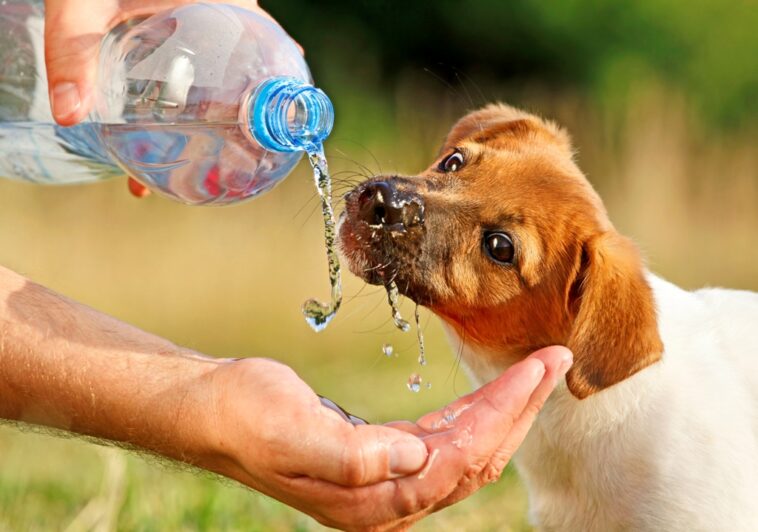It’s summertime again. Many of you will be taking vacations and planning outdoor activities that include the canine members of your family. But, just like humans, dogs can become overheated in the hot Florida sun. That means they are at risk for canine heat stroke.
Do you know the warning signs of canine heat stroke?
How Dogs Stay Cool
Humans are equipped with sweat glands to stay cool. However, for the most part, dogs don’t sweat. Instead, they rely on panting to exchange warm air from their bodies for cooler external air.
When the mercury begins to climb outside, any exercise – even a simple walk – can make it difficult for dogs to cool off. Short-nosed breeds such as bulldogs, Pekingese and boxers are at an especially high risk for heat stroke because their anatomy causes a less efficient cooling-off exchange.
Preventing Canine Heat Exhaustion
There are many things that dog owners can do in the way of prevention to avoid canine heat stroke. First, if your dog is an outside dog, make sure that they have access to plenty of shade and fresh, cool water. Dog runs and tie-downs are problematic because shade can diminish or disappear with the changing position of the sun throughout the day.
If your dog is in danger of not being able to lie down in the shade, consider installing a large shade umbrella. It’s a good idea to also have extra bowls of water and even a children’s wading pool that your dog can reach if it gets too hot.
In addition to making sure your dog stays cool at home, it’s important to plan ahead when taking your dog with you on summertime outings such as baseball games, beach excursions or hikes. Be sure to bring extra gallon jugs of water, towels, coolers full of ice and shade umbrellas. No matter how much fun you are having, stop every 15 minutes or so for a water and rest break.
Symptoms of Heat Stroke
If your dog begins to exhibit any of the following signs, you must act quickly:
−Rapid or excessive panting
−Vomiting or diarrhea
−Unstable or shaky gait
−Hot and dry nose
At the first sign of overheating, move your dog to an air-conditioned building or to a shady spot at the very least. Immerse the dog in cool water if possible. If immersion is not possible, cool the underside of the dog’s body by way of garden hose, water buckets or wet towels. Target the groin area, the armpit area and the pads of the feet for more rapid cooling results.
Offer water to drink, but don’t allow gulping, as this may cause vomiting and further loss of hydration. If possible, take the dog’s temperature rectally. The normal body temperature for a canine is 100-103 degrees. Anything over that is cause for concern. When the dog’s temperature is within the normal range, stop the cooling process and let the dog rest. Further cooling efforts may cause the dog to go into shock.
Understanding how heat stroke can affect dogs will help you protect your canine friend during the hot summer months. Remember to act fast if your dog starts showing signs of heat stroke, and if symptoms persist, contact your veterinarian immediately.




Comments